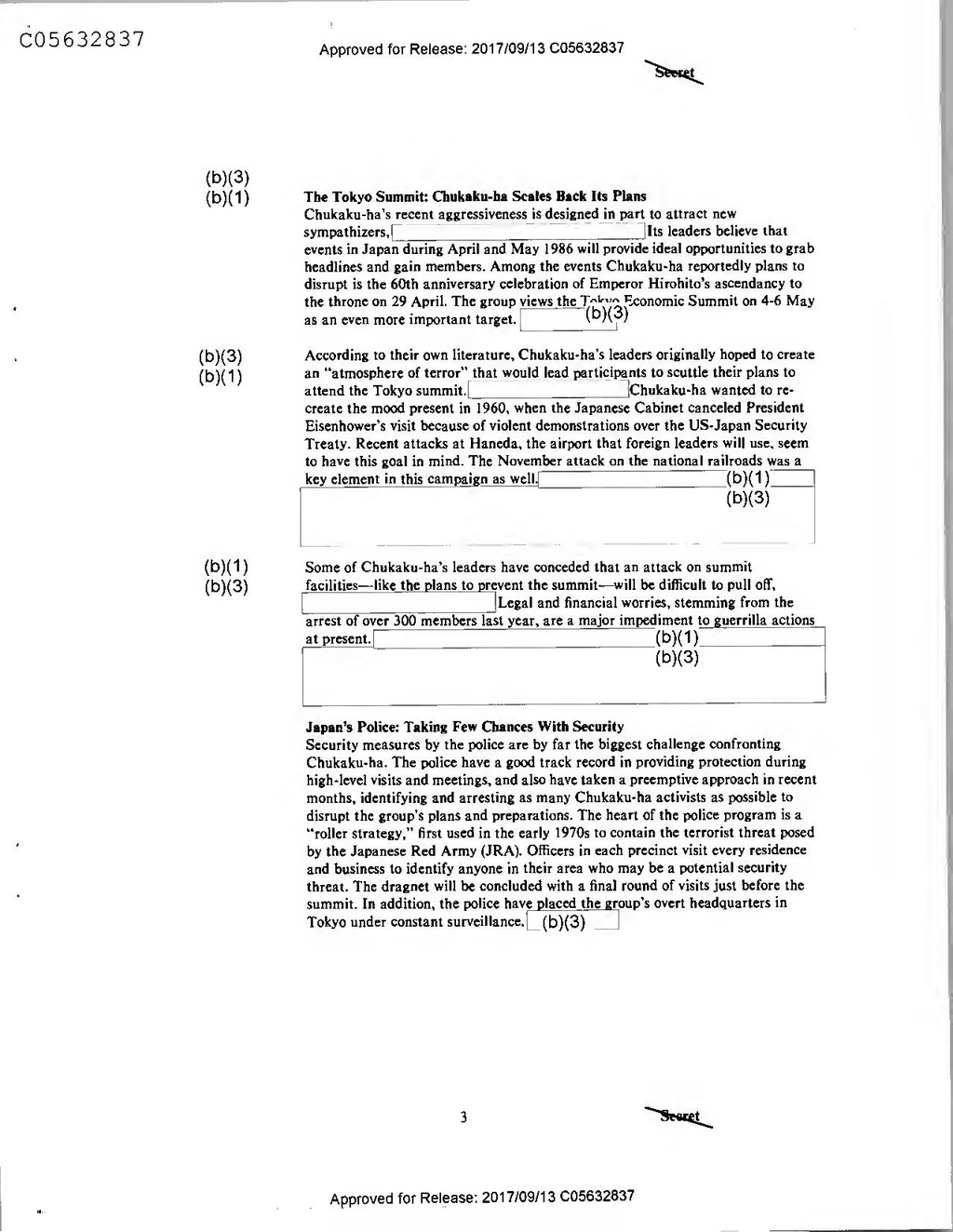(b)(3) (b)(1)
The Tokyo Summit: Chukaku-ha Scales Back Its Plans Chukaku-ha's recent aggressiveness is designed in part to attract new sympathizers,
Its leaders believe that events in Japan during April and May 1986 will provide ideal opportunities to grab headlines and gain members. Among the events Chukaku-ha reportedly plans to disrupt is the 60th anniversary celebration of Emperor Hirohito's ascendancy to the throne on 29 April. The group views the Takvo Economic Summit on 4-6 May as an even more important target.
(b)(3)
(b)(3) (b)(1)
According to their own literature, Chukaku-ha's leaders originally hoped to create an "atmosphere of terror” that would lead participants to scuttle their plans to attend the Tokyo summit.
Chuka ku-ha wanted to recreate the mood present in 1960, when the Japanese Cabinet canceled President Eisenhower's visit because of violent demonstrations over the US-Japan Security Treaty. Recent attacks at Haneda, the airport that foreign leaders will use, seem to have this goal in mind. The November attack on the national railroads was a key element in this campaign as well.
(b)(1) (b)(3)
(b)(1) (b)(3)
Some of Chukaku-ha's leaders have conceded that an attack on summit facilities-- like the plans to prevent the summit—will be difficult to pull off,
Legal and financial worries, stemming from the arrest of over 300 members last year, are a major impediment to guerrilla actions at present.
(b)(1). (b)(3)
Japan's Police: Taking Few Chances With Security Security measures by the police are by far the biggest challenge confronting Chukaku-ha. The police have a good track record in providing protection during high-level visits and meetings, and also have taken a preemptive approach in recent months, identifying and arresting as many Chukaku-ha activists as possible to disrupt the group's plans and preparations. The heart of the police program is a "roller strategy,” first used in the early 1970s to contain the terrorist threat posed by the Japanese Red Army (JRA). Officers in each precinct visit every residence and business to identify anyone in their area who may be a potential security threat. The dragnet will be concluded with a final round of visits just before the summit. In addition, the police have placed the group's overt headquarters in Tokyo under constant surveillance. (b)(3)
3
Seoret
Approved for Release: 2017/09/13 C05632837
